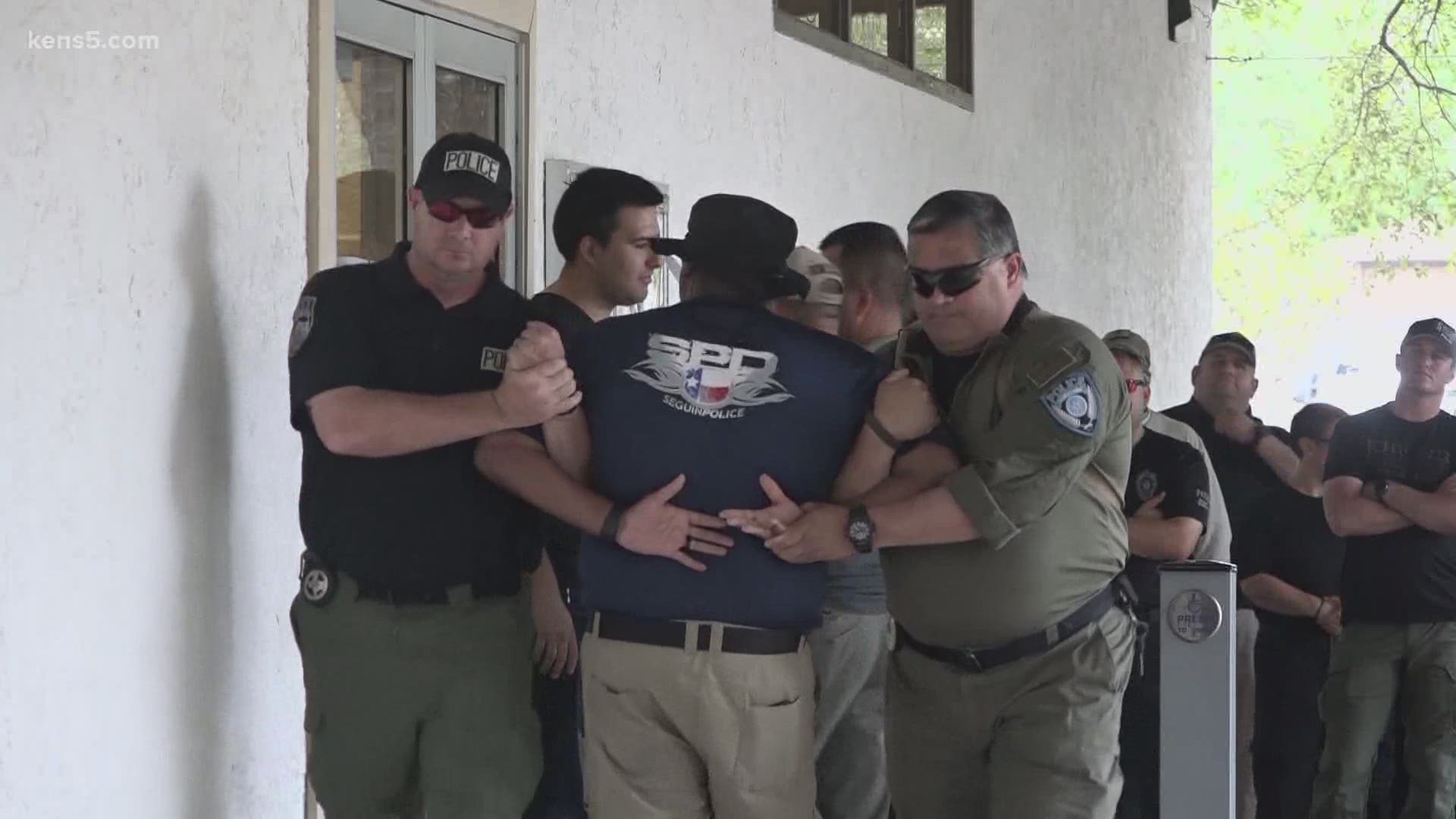SAN ANTONIO — As demonstrators enter the second week of protests against police brutality and racial bias in law enforcement, smaller suburban agencies are banding together to make sure they have their own team to respond to protests in their municipalities.
For years, smaller agencies have relied on the San Antonio Police Department and Bexar County Sheriff’s Office to respond to large scale protests in their communities. But leaders with the Alamo Area Police Chiefs Association said due to recent unrest, they felt they needed to be prepared for an instance in which the two biggest agencies in the area were unable to respond.
"We've been talking about getting this going for about a year, but at the last minute when we realized that the regional team, up till now, had been San Antonio to respond or Bexar County,” said Leon Valley police chief Joe Salvaggio explained. “Being that they're taken up with dealing with the issues downtown, we all decided the smaller agencies would come together and develop a team to be able to respond to each other just in case San Antonio Bxear County can't make it"
Talks of a regional team became reality in recent weeks when dozens of law enforcement officers from more than 20 agencies committed to supporting the effort. As of Sunday, the group had trained on de-escalation and riot control for nearly a week. Salvaggio said more officers and deputies participated than first anticipated, and the team is only expected to grow.
As incidents of serious bodily injury and death are reported during law enforcement intervention in demonstrations across the country, chiefs of local law enforcement agencies said they are not deaf to the complaints from activists. In their training, led by Leon Valley lieutenant David Andersen, who started the San Antonio Police Department’s Mobile Field Force before retiring and moving to Leon Valley, de-escalation is stressed.
“There's various attempts to de-escalate it verbally,” said Kirby Police Chief Kevin Bois. "But where do you go from there when they just will not disperse? We're teaching soft, hands-on techniques on how to secure and move these agitators out of the area. And that way it opens the roadway back up to regular traffic.”
Bois and Salvaggio said the main goal of the mobile field force is to deploy to suburban areas for crowd control and protect the lives and safety of those peacefully demonstrating.
“With most of the agencies out there, they are de-escalating,” Salvaggio said. "They are allowing the protesters to get as angry and upset as they want because that's their right. They have a right to do that. But when they start getting violent or anything like that, we have to do something to protect not only the public but the officers."
Local police chiefs said they too are outraged by the circumstances of the death of George Floyd and understand and share the anger of those upset about Floyd’s death. Castle Hills police chief Johnny Siemens said Floyd’s death sets law enforcement and community relations back “lightyears.”
"I think it starts with the applicant processing and in hiring the right folks,” Siemens said. “You have to place a premium on that within your agency.”
Siemens, along with many other local suburban police chiefs, said they are in support of more transparent policies as it relates to reporting disciplinary actions, along with the release of body-worn camera video following an officer-involved shooting, so long as its release does not interfere with a criminal investigation. Though, the smaller agencies account for a small fraction of the region’s custodial deaths.

